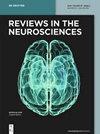Studying the Alzheimer’s disease continuum using EEG and fMRI in single-modality and multi-modality settings
IF 4.1
3区 医学
Q2 NEUROSCIENCES
引用次数: 0
Abstract
Alzheimer’s disease (AD) is a biological, clinical continuum that covers the preclinical, prodromal, and clinical phases of the disease. Early diagnosis and identification of the stages of Alzheimer’s disease (AD) are crucial in clinical practice. Ideally, biomarkers should reflect the underlying process (pathological or otherwise), be reproducible and non-invasive, and allow repeated measurements over time. However, the currently known biomarkers for AD are not suitable for differentiating the stages and predicting the trajectory of disease progression. Some objective parameters extracted using electroencephalography (EEG) and functional magnetic resonance imaging (fMRI) are widely applied to diagnose the stages of the AD continuum. While electroencephalography (EEG) has a high temporal resolution, fMRI has a high spatial resolution. Combined EEG and fMRI (EEG–fMRI) can overcome single-modality drawbacks and obtain multi-dimensional information simultaneously, and it can help explore the hemodynamic changes associated with the neural oscillations that occur during information processing. This technique has been used in the cognitive field in recent years. This review focuses on the different techniques available for studying the AD continuum, including EEG and fMRI in single-modality and multi-modality settings, and the possible future directions of AD diagnosis using EEG–fMRI.在单模态和多模态环境下使用脑电图和 fMRI 研究阿尔茨海默病的连续性
阿尔茨海默病(AD)是一种生物和临床连续性疾病,包括临床前期、前驱期和临床期。早期诊断和识别阿尔茨海默病(AD)的各个阶段在临床实践中至关重要。理想情况下,生物标志物应能反映潜在的过程(病理或其他),具有可重复性和非侵入性,并能在一段时间内重复测量。然而,目前已知的 AD 生物标记物并不适合用于区分阶段和预测疾病的发展轨迹。利用脑电图(EEG)和功能磁共振成像(fMRI)提取的一些客观参数被广泛应用于诊断 AD 的连续阶段。脑电图(EEG)具有较高的时间分辨率,而功能磁共振成像(fMRI)具有较高的空间分辨率。结合脑电图和 fMRI(EEG-fMRI)可以克服单一模式的缺点,同时获得多维信息,并有助于探索与信息处理过程中发生的神经振荡相关的血流动力学变化。近年来,这种技术已被用于认知领域。本综述重点介绍了研究注意力缺失症连续性的不同技术,包括单模态和多模态环境下的脑电图和 fMRI,以及使用脑电图-fMRI 诊断注意力缺失症的未来可能发展方向。
本文章由计算机程序翻译,如有差异,请以英文原文为准。
求助全文
约1分钟内获得全文
求助全文
来源期刊

Reviews in the Neurosciences
医学-神经科学
CiteScore
9.40
自引率
2.40%
发文量
54
审稿时长
6-12 weeks
期刊介绍:
Reviews in the Neurosciences provides a forum for reviews, critical evaluations and theoretical treatment of selective topics in the neurosciences. The journal is meant to provide an authoritative reference work for those interested in the structure and functions of the nervous system at all levels of analysis, including the genetic, molecular, cellular, behavioral, cognitive and clinical neurosciences. Contributions should contain a critical appraisal of specific areas and not simply a compilation of published articles.
 求助内容:
求助内容: 应助结果提醒方式:
应助结果提醒方式:


